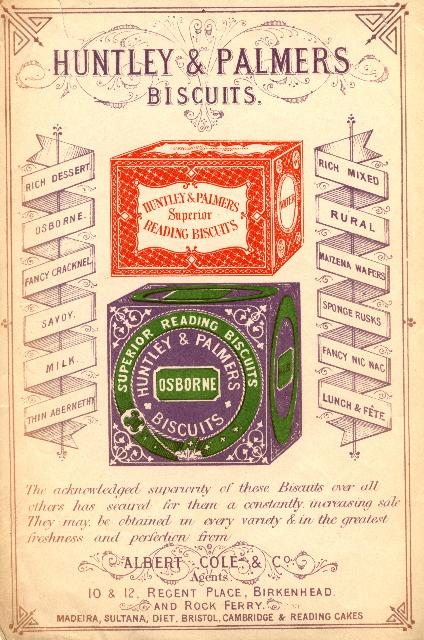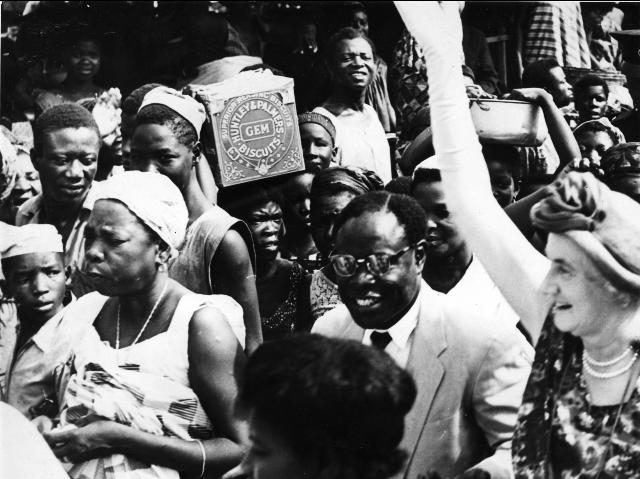Doctor William Oliver was an eighteenth century physician who was concerned about the indulgent eating habits of some of his wealthy patients. He invented a biscuit made from flour, milk, fresh butter, malt and hops which became known as the Bath Oliver. It was the first digestive biscuit. By the late nineteenth century Doctor Oliver's famous recipe and process were owned by Huntley & Palmers.

Bath Oliver production 1960s. George Palmer originally made Bath Oliver biscuits under licence from William Fortts of Bath. They continued to be one of the most popular varieties made at Reading until the factory closed in 1976. (REDMG : 1997.130.136)
Osborne biscuits
These were originally produced in 1860 and were one of the first semi-sweet varieties of biscuit to find mass favour. Initially intended to be called after Queen Victoria, Her Majesty declined to be associated with a commercial product but gracefully suggested that they could name the biscuit after her favourite home, Osborne House on the Isle of Wight

In the nineteenth century Huntley & Palmers did not use widespread marketing, believing it made their products look cheap and low quality. Advertising was restricted to low-key leaflets and flyers like this one. (REDMG : 1997.82.206)
Gems
These were apparently first produced by accident in the 1850s after some experimental biscuits shrank in the oven. Thomas Huntley liked the result and the product became an instant success, with icing added in 1910. These were some of the smallest biscuits that Huntley & Palmers ever produced and were used in many of the novelty tins.

A South African woman carries a tin of Huntley and Palmers Gem biscuits during the visit of Lady Dorothy Macmillan, wife of British Prime Minister Harold Macmillan, in 1960. (REDMG : 1997.130.327)
Breakfast biscuit
The Breakfast Biscuit was invented by Walter Palmer in 1891. Walter was a scientist who perfected this medicated biscuit using yeast in order to help his friend, George Meredith. In 1892 the Breakfast biscuit was introduced to France. Within two years the demand for this biscuit was so great, both at home and overseas, that a new breakfast biscuit factory had to be built.

This advertisement in French declares that it goes well with butter and cheese and with coffee, tea or drinking chocolate. lt proved an immediate success as an appetizing substitute for the baker's roll. (REDMG : 1997.82.608)
As the turn of the 20th century approached, nobody could have anticipated that within decades, Britain's social fabric would be torn apart by the horrific violence and bloodshed of the First World War.
Read on to learn about the First World War and biscuits, and how the demands of the war transformed Huntley & Palmers' production lines.





